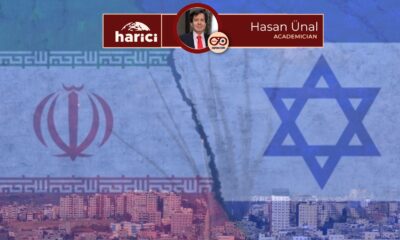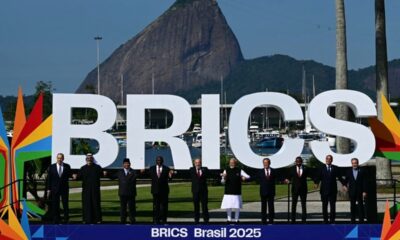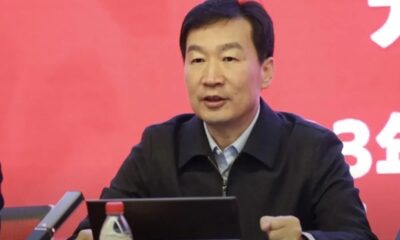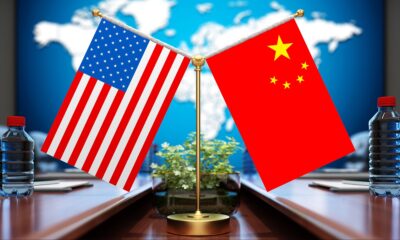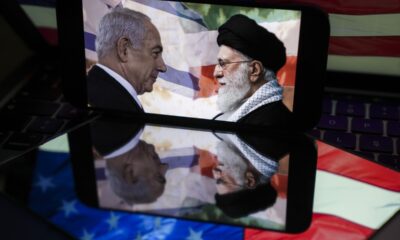Opinion
Areas of cooperation in Turkish-Chinese relations: Is it better late than never?
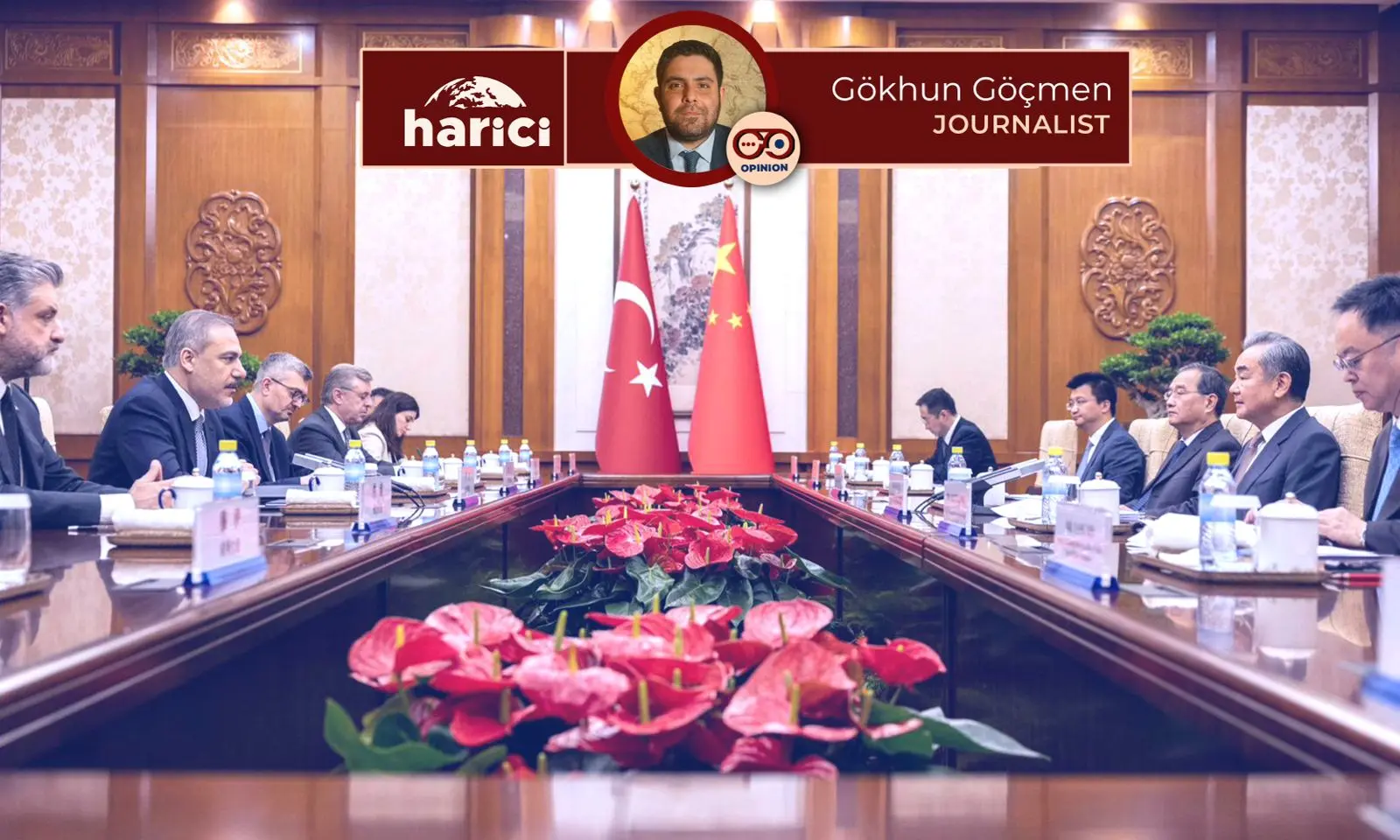
The fact that global production and the resulting shift in values towards Asia has led all countries in the world to revise their policies towards the region, especially towards China. While the US under former President Barack Obama was defined as an ‘Indo-Pacific’ country, the attitude towards China in national security documents has gradually shifted from cooperation to competition. In line with a policy that the US interpreted as an attempt to mitigate risk and China as an attempt to ‘encircle’, the Washington administration preferred to build alliances with regional actors while raising tariff walls and accelerating the technology war. As a result of this preference, platforms such as AUKUS and QUAD were witnessed, while discussions on NATO’s expansion towards Asia or Asia’s NATO gained momentum.
Europe’s response to the rise of China, which has traditionally been part of the security architecture built by the US, has oscillated between competition and cooperation. While powers such as France, which defends European autonomy, and Hungary, which is on the periphery, have adopted a more cautious approach, Berlin is pointing to competition, provided that economic interests are protected.
The approach of the countries of the Global South to the rise of China has so far been in the opposite direction to that of the US and its allies. Countries that were founded as a result of the struggle against colonialism, that do not want to imitate the development prescriptions of Western countries, that come from different historical backgrounds and have different forms of governance, have seen China as a window of opportunity. China, which is seeking more friends in different parts of the world in the face of US policies of repression, would not only make more generous offers to these countries, but would also give them room to manoeuvre against Washington.
A new phase in China and Turkish-Islamic relations
It can be said that the Middle East and Central Asia are among the regions that are adapting to this reality, which has been described as a multipolar world. In the Middle East, the Sino-Arab Summit, the first of which was held with the visit of Chinese President Xi Jinping to Saudi Arabia in 2022, and the Sino-Arab Foreign Ministers’ Forum, the tenth of which was held this year, are seen as symbols of politically institutionalised cooperation, while the expansion of BRICS with the countries of the region sums up the dimensions of the growing economic bond. It is also noteworthy that China has been given the role of “quarterback” in regional conflicts, in line with its growing political prestige and economic weight. Having hosted the establishment of diplomatic relations between Saudi Arabia and Iran in 2023, China’s weight is also felt in the Palestinian issue. While the foreign ministers of the Organisation of Islamic Cooperation preferred China as the first address on their Palestine tour, Hamas and Fatah sat down in Beijing for unity negotiations. It is known that the Palestinian factions, which made goodwill statements at the first meeting, decided to continue their meetings in China.
Central Asia retains its special position among the regions where relations with China are deepening. China, Kazakhstan, Turkmenistan, Kyrgyzstan, Tajikistan and Uzbekistan (C-C5), which have been meeting at foreign minister level since 2020, met in Xi’an, the starting point of the historic Silk Road, to raise their cooperation to the level of heads of state in 2023. Economics was not the only topic on the agenda at the summit, which heralded investment in the Central Corridor, which runs from China to Europe and includes Turkey. Announcing a $3.8 billion grant to the countries of the region, the Chinese side also stressed that they were a “community of shared destiny” with Central Asia, while the five countries underlined their support for Beijing’s foreign policy narrative.
Is Turkey too late?
Although Ankara has acknowledged China’s growing global influence, especially in regions that are among Turkey’s main areas of interest, the policy development process has been relatively slow. In 2019, Turkey launched a process called the ‘Re-Asia Initiative’ in the region, where China plays a central role, and President Recep Tayyip Erdoğan explained the need for this policy by saying that ‘the pendulum of history has shifted to Asia’. Moreover, President Erdoğan, like other countries of the Global South, expressed the fact that the international system does not give them enough representation with the words ‘The world is bigger than five’ and did not hesitate to say that multinational platforms are insufficient to solve acute global problems.
Despite the accuracy of Turkey’s observations, which have become globally recognised, it has become clear in the meantime that the steps taken by Ankara do not correspond to an improvement in the institutional order. Turkey’s engagement with the Western world, as opposed to the Middle East and Central Asian countries, as well as its lowered economic expectations and disputes over the Uighur issue, have played a role in such a picture. Former Foreign Minister Mevlüt Çavuşoğlu expressed this difference at the end of 2022, stating that the Turkish delegation did not want to go to the Uyghur Autonomous Region, as China had planned. In addition, the fact that most of the Turkish media’s coverage of China consisted of Western-based translations and that Turkey was not sufficiently recognised in China and China in Turkey were among the factors affecting the policy-making process.
Can Minister Fidan forge a new equation?
Like other developing countries around the world, particularly in the Middle East and Central Asia, Turkey still has time to adjust its relations with China to the new realities. In this context, Foreign Minister Hakan Fidan’s visit to China on 3-5 June can be seen as a valuable start in announcing Ankara’s position on issues of interest to China.
In his statement here, Minister Fidan said that Ankara and Beijing overlap on many aspects of international relations, including contentious areas such as Palestine and Ukraine; that Turkey supports China’s constructive relations with Asian and Middle Eastern countries; and that Turkey appreciates China’s role as a mediator, such as in the Saudi and Iranian peace processes.
Perhaps more importantly for China, Minister Fidan said of the arm-wrestling between Washington and Beijing: ‘The fact that the markets established by the dominant powers in the last century are changing hands again under fairer, more competitive market conditions is an outcome that must be accepted. Minister Fidan’s assessments that there is a global transfer of power and that it should be peaceful, as well as his reiteration of respect for China’s sovereignty and territorial integrity, were seen as positive factors.
What are the areas of cooperation?
While Minister Fidan’s presentation of Turkey’s position sets the framework for relations in the new era, the main external developments that require cooperation between Ankara and Beijing are the Palestinian and Ukrainian crises, and the risks and opportunities that arise on trade routes.
On the Palestinian issue, Turkey and China, which advocate a ceasefire in the short term and the establishment of a sovereign Palestinian state with Jerusalem as its capital based on the 1967 borders in the long term, could play an active role in uniting the Palestinian factions to mature this solution. It is not known whether Turkey and China are coordinated, but it is obvious that they are taking parallel steps in this direction. Indeed, the Hamas delegation that travelled to Beijing for merger negotiations with Fatah had issued a statement to the international press from Istanbul the day before, saying that they wanted to unite under one roof.
Ukraine is also on the list of crises where Turkey and China can play an equation-changing role. Ankara and Beijing, which can simultaneously maintain diplomatic relations with Russia and Ukraine, have converging views on opposing the sanctions policy, representing Russia in peace negotiations and respecting the sovereignty and territorial integrity of countries. China, which has been conducting shuttle diplomacy between Moscow, Kiev and European capitals with a 12-point road map, and Turkey, which previously brought the two countries to the brink of peace in Istanbul, could play a mediating role if the warring parties, especially Ukraine, show the will to do so.
The wind blowing in Turkey’s favour on global trade routes also stands out among the dimensions of cooperation in the new period. Indeed, after the Ukraine crisis, the Northern Corridor from China to Europe via Russia lost its popularity, while the Southern Corridor, which includes Iran, became more fragile as a result of geopolitical tensions. On the other hand, the Central Corridor, centred on Turkey, has become more attractive as the Central Asian countries have largely completed infrastructure works and simplified customs procedures. The Caspian Central Corridor, which cuts the distance between China and Europe by 2,000 kilometres compared to the Northern Corridor, will remain on Turkey’s agenda in the new period. In addition, Foreign Minister Hakan Fidan underlined Turkey’s comparative advantage by expressing the expectation that the Belt and Road Initiative will be harmonised with the Development Road. By stating that the Belt and Road will also provide opportunities for China, Ankara has made clear its position that China should become a partner in global trade rather than an outsider as desired by the West.
The address for cooperation: BRICS, committees, international summit and leaders’ meeting
Foreign Minister Hakan Fidan’s speech during his visit to China, while not as clear as Ankara’s position on hot topics and the listed areas of cooperation, also provides clues as to the platforms that can be used.
Minister Fidan’s statement that he will attend the BRICS meeting in Russia can be seen as a turning point in the institutionalisation of economic relations. BRICS, which came to the fore with President Erdoğan’s statements in 2018, represents 31 per cent of the global economy with the latest participation and includes 6 of the 10 largest oil producers in the world. The fact that BRICS, which is gaining weight every day against the G7, the so-called club of the rich, can respond to some of Turkey’s urgent needs with instruments such as the New Development Bank is one of the facts that Treasury and Finance Minister Mehmet Şimşek cannot ignore. In fact, in a statement he made in 2017, Minister Mehmet Şimşek said, “In order to benefit from the projects they are going to give, you have to be a member. For this reason alone, we are seriously considering becoming a member’.
The ‘intergovernmental working committee’ announced by Minister Fidan during his visit to China is the second notable step in the context of institutionalisation between Ankara and Beijing. The appointment of Mehmet Şimşek, Turkey’s Minister of Treasury and Finance, to head this committee will help achieve results in many areas, such as correcting imbalances in the huge volume of trade, increasing investment in nuclear energy and new technologies, and further activating the Middle Corridor.
While the first meeting of the intergovernmental working committee is expected to be held in the coming months, Chinese President Xi Jinping is likely to visit Turkey. Announcing Turkey’s invitation, Foreign Minister Fidan said: “We would like to host Chinese President Xi Jinping in Turkey this year. I have once again conveyed our president’s invitation to our Chinese colleague. Xi’s invitation to visit Turkey may serve to open a new page in terms of regional order as well as bilateral relations.
On the other hand, the Uighur issue may complicate the parties’ engagement, which has been delayed compared to the Middle East and Central Asia. Minister Fidan’s visit added the definition of the cities of Urumqi and Kashgar to the disagreement over terms such as ‘crime, criminal, freedom and separatism’ that has been a problem between Turkey and China for some time. While Minister Fidan defined these two cities as Turkish and Islamic cities during his contacts, this thesis is not accepted by China. According to the White Book published by the Beijing administration, the region is presented as a continuation of ancient Chinese culture, while it is argued that the Uyghurs have separated from the Turks over time.
Although there has been no official or unofficial (through the media) reaction to Minister Fidan’s preference for a different definition from China’s, it would not be surprising if it caused some discomfort.
Opinion
From the Six-Day War to the ‘Twelve-Day War’
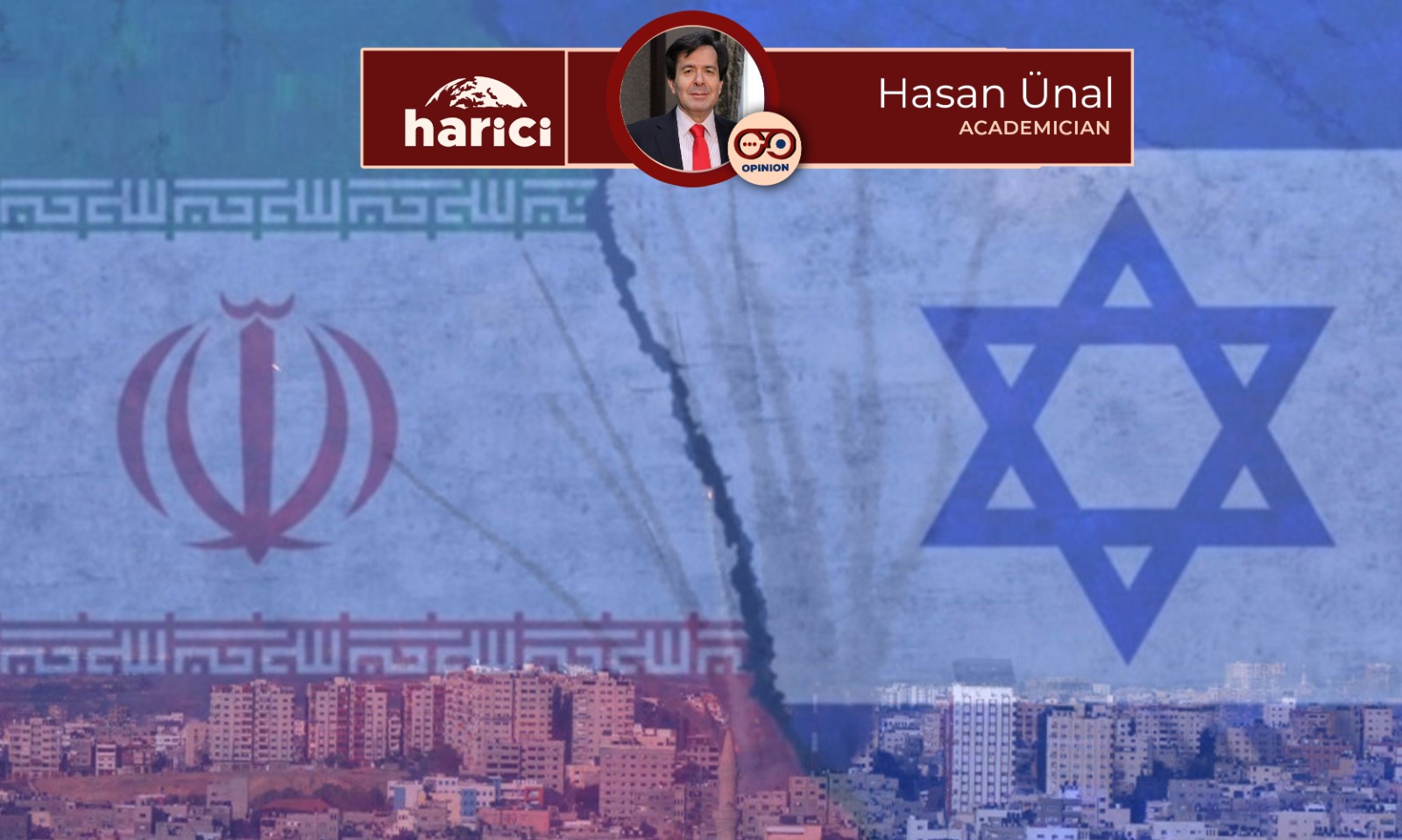
The first round of the Iran-Israel conflict/war has likely concluded. This round, which consisted of mutual air strikes and missile salvos, will go down in the recent history of the Middle East as the Twelve-Day War. In the past, there was the Six-Day War; on June 5, 1967, Israel attacked Egypt first, followed by Syria and Jordan in the succeeding days, inflicting a crushing defeat on three Arab states in six days and quadrupling its territory.
Israel had previously fought these three states in 1948, immediately after its declaration of independence. In that war, it dealt a serious defeat to Egypt and Syria but was defeated by Jordan. Jordanian forces, largely trained and commanded by British officers, had ‘occupied’ the areas of what are today the West Bank and East Jerusalem. When Israel attacked its Arab neighbors in June 1967, it once again inflicted a devastating defeat on the two states it had beaten in the 1948 war, occupying Egypt’s Sinai Peninsula and Syria’s Golan region. It also defeated Jordan, annexing East Jerusalem and the West Bank, thereby roughly quadrupling its own territory. And because it managed to do all this in six days, these conflicts went down in history as the Six-Day War.
This defeat was not only devastating and humiliating for the warring Arab states and the Arab world in general, but it also brought about the end of the legendary Egyptian leader Nasser. Following his death from a sudden heart attack three years later (1970), it marked the end of the Pan-Arabism ideology not just in Egypt but across the entire Arab world. When the Arab states of Egypt and Syria responded to this defeat in 1973 with what was perhaps their first synchronized and well-planned attack (the Yom Kippur War, October 7, 1973), they managed to reclaim all the territory Israel had occupied in the Six-Day War on the very first day. However, thanks to the most extensive arms and ammunition airlift in history, conducted by the United States with large military transport planes flying directly to the front lines, Israel managed to turn the tide of the war and bring it to a close at its starting point. A similar airlift by the Soviet Union to the Arab countries saved Egypt’s encircled Third Army in the Sinai Peninsula from annihilation, but it was not enough for them to regain the military successes of the initial days.
Israel has not fought a war with any state since 1973
The Yom Kippur War would also be a turning point in the Arab-Israeli conflict. The policy initiated by Egyptian leader Anwar Sadat just before the war—of rapidly distancing from the Soviet Union and moving closer to the US—paid off for Cairo. Through the US-mediated peace process (Camp David), Egypt largely recovered the territories it had lost in the 1967 war, briefly regained in the early days of the 1973 war, and then lost again as the war turned in Israel’s favor. However, when this process, which began with recognizing Israel’s right to exist in the Middle East, progressed to the appointment of ambassadors between the two countries and the signing of the Camp David Accords, Egypt would be expelled from the Arab League at the initiative of Arab nations led by Syria, Iraq, and Libya.
The subsequent years were not at all positive for the Arab states and Palestinians who favored continuing the struggle against Israel to the end. The unipolar world order that emerged under American leadership after the collapse of the Soviet Union opened every window of opportunity for Israel. Eventually, the Iraqi and Libyan regimes that opposed reconciliation with Israel were overthrown, and their leaders (Saddam Hussein and Muammar Gaddafi) were killed. Syria, destabilized by our [Türkiye’s] own misguided policies, was added to this chain of events (2011-2024). Meanwhile, the Oslo Peace Process, initiated in the early 1990s, was sabotaged by extremist parties and the political elite in Israel.
During this period, while Israel tormented Palestinians and the groups in Southern Lebanon that would become Hezbollah for years, the instability and popular discontent in Iraq helped Iran gain tremendous strategic depth in that country and in Syria. Thus began the emergence of the forces known as the Axis of Resistance. The Hamas, Hezbollah, Hashd al-Shaabi [Popular Mobilization Forces], and Yemen’s Ansar Allah movements either began or developed during this period. The Syrian state seemed to act as a bridge connecting the Axis of Resistance, from Iran to Hezbollah and even to Hamas.
It would be appropriate to view Israel’s June 13 attack on Iran as a continuation of the series of wars it launched in response to Hamas’s attacks on October 7, 2023, waged first against Hamas in Gaza, which a majority of global expert opinion has deemed a ‘genocide’. Perhaps the most significant development that paved the way for Israel, which had been unable to achieve sufficient success against Hezbollah, was the completely unexpected fall of the Syrian regime in December 2024 and former President Bashar al-Assad’s flight to Moscow.
Israel engaged in war with a state actor for the first time since 1973
Israel’s air operation against Iran, launched on June 13, is its first conflict with a state actor since the three-week war against Egypt and Syria in 1973. Moreover, this cannot be considered a full-scale war, as the land and naval forces of these two states, separated by approximately two thousand kilometers of land borders, did not participate in the clashes, and their special forces did not conduct operations against each other.
Israel’s air strikes on Iran were launched simultaneously with assassination operations by opposition/espionage elements it had cultivated within Iran, killing high-level civilian/military officials in Tehran. In this respect, Israel’s attack must have achieved the effect of a complete surprise raid. However, it is also clear that this should not be exaggerated. Indeed, the Iranian administration made new appointments within hours and began its first missile attacks on Israel that same evening. No Western air defense system could fully stop Iran’s missile attacks, which were carried out with increasing intensity; the legendary air defense system known as the Iron Dome was largely ineffective. In contrast, the Israeli air force’s strikes had only a limited impact. The limited involvement of the US in the war did not significantly damage Iran’s missile launch capabilities, and ultimately, the parties—likely Israel—requested or agreed to a ceasefire.
The results of the Twelve-Day War
In these clashes, Iran’s subjection of Israeli territory to intense missile fire is an extraordinary achievement; since its establishment in 1948, Israeli residential areas had never been comprehensively bombed by any state. In the 1948-49 war that began immediately after its declaration of independence, Israel fought against three Arab states (Egypt, Syria, Jordan). In contrast, in the Six-Day War, it launched a surprise attack on these three states, inflicting a disastrous defeat on all of them. In the 1973 War, it was the one surprised, but in none of these conflicts were its territories and residential areas subjected to any significant air raids by the air forces of the countries it fought.
However, in the last two of these wars—air forces were not widely used in the first—Israel had subjected the major centers of Egypt, Syria, and Jordan, including their capitals, to intense aerial bombardment. While Israel’s superiority in air power was clear in the conflict with Iran, Iran’s undisputed superiority in missiles turned every inch of Israeli territory into a target. The effect this will have on the Israeli public in the short and medium term must be taken seriously. For Israeli citizens, a large majority of whom hold dual passports, the government’s refusal to allow them to leave the country for security reasons during the conflict strengthens this thesis.
The first question after the conflict concerns whether this ceasefire will be permanent. Although Israel has largely adhered to ceasefire processes signed after wars with states, it has not behaved the same way toward actors like Hamas and similar groups—with Hezbollah being a partial exception. How it will act towards a state actor like Iran remains a significant question. On the other hand, even if the ceasefire holds, it would be overly optimistic to think that Israel and the United States have abandoned the idea of regime change.
It is not easy to predict at this moment how Iran’s gaining of considerable sympathy in world public opinion and Israel’s image as a country continuing its aggression after the Gaza genocide will concretely reflect on the field of struggle. In this period, where the limits of what Trump can do for Israel have become clear, it does not appear to be a strong possibility that Israel will change its foreign and security policies by accepting multipolarity as a given.
In this case, one can assume with certainty that Iran will try to fill its gaps by acquiring air defense systems from Russia and advanced fighter jets from China, while Israel, as always, will prepare for the next round with all the systems developed by the American arms industry. It is also among the possibilities that Iran could establish a strong deterrence, dissuading Israel and America from this course. There is no doubt that there are many lessons for Türkiye to draw from this war. Foremost among them would be for Ankara to understand how wrong its Syria policies were, which completely paved the way for Israel, and to act accordingly. The lessons for Türkiye are not the subject of this article and will be addressed in other analyses, so we will leave it at that for now…
Prof. Dr. Hasan Ünal
Başkent University
Department of Political Science and International Relations
Opinion
A Controllable Conflict with No Winners
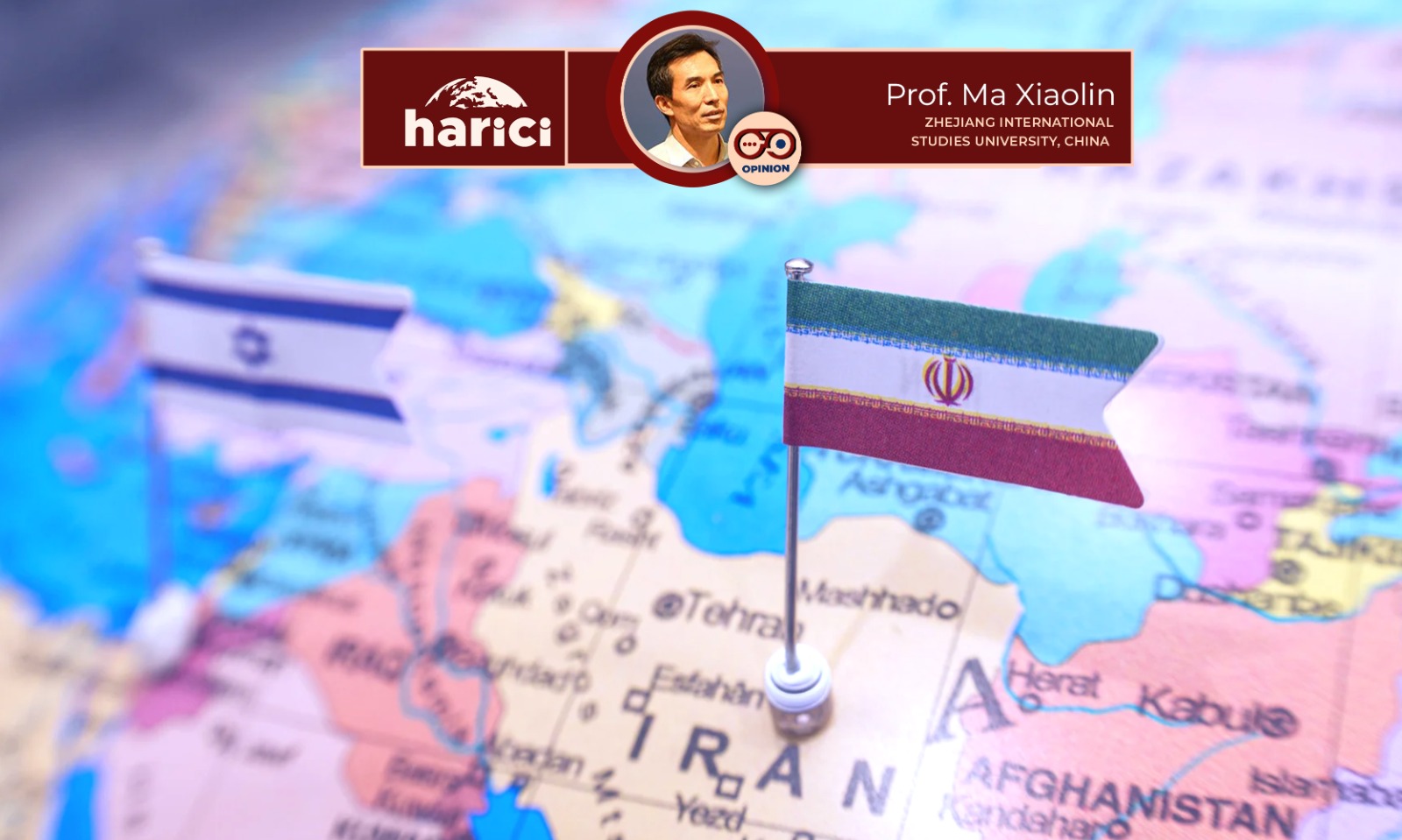
From June 13 to 24, an unprecedented large-scale offensive confrontation took place between Israel and Iran. During this period, the United States directly joined the conflict in support of Israel, launching long-range bombings on three major Iranian nuclear facilities, prompting a symbolic retaliatory response from Iran. Ultimately, under direct U.S. mediation, the conflict transitioned into a ceasefire, with all three parties claiming “victory.” From a joint U.S.-Israeli assault on Iran to a rapid ceasefire just 12 days later, this was a conflict with no winners—a calculated, limited clash filled with theatrical displays that failed to address the fundamental contradictions, and thus risks reigniting at any moment.
There were no winners in this conflict. Israel, Iran, and the United States all paid varying costs at different levels, with far-reaching consequences. Of course, there were clear losers—the people of Israel and Iran caught in the fire, the ever-scarce willingness for reconciliation and strategic mutual trust between Iran, Israel, and the United States, and the reputation of the U.S., which again played both referee and player.
Israel, leveraging its powerful long-range strike capabilities and intelligence networks, adhered to its military tradition of “preemptive strikes” and repelling threats beyond its borders. Under the codename “Lion’s Rise,” it conducted targeted bombings on select Iranian nuclear facilities, government institutions, missile and air force bases. With the help of undercover agents, over 20 senior Iranian military officers and more than 10 nuclear scientists were physically eliminated.
As a “micro-state” in terms of population, land, and resources, Israel dared to proactively challenge Iran—a Middle Eastern power ten times its size in all three aspects. This showcased Israel’s strong national will, sophisticated military strategy, and supreme air dominance. Notably, Israeli air forces operated flamboyantly over Tehran for two hours, even performing aerial refueling. Israeli intelligence’s deep infiltration, information acquisition, local recruitment, and surprise attacks on Iranian soil created a modern myth of both overt and covert warfare.
However, Israel still emerged a loser. In terms of morality and international opinion, Israel once again blatantly trampled on the UN Charter and international law, violating Iran’s sovereignty, airspace, and territorial integrity under the pretext of Iran’s nuclear ambitions. Moreover, Israel used the airspace of Arab countries between it and Iran as if it were its own, turning them into war corridors and violating the sovereignty, airspace, and dignity of these innocent neighbors.
Israel’s undeclared war and surprise attack on Iran—including direct “decapitation” of military leaders and continued assassinations of nuclear scientists—constitute typical acts of state terrorism. Ending the lives of foreign military personnel and civilians without formal charges, defense, or verdicts gravely undermines modern civilization, the rule of law, and humanitarian values, further damaging Israel’s already distorted and negative international image—perhaps even to the point of disgust.
Israel’s blitz on Iran triggered a fierce counterstrike dubbed “Sincere Promise-3.” In just 12 days, Iran launched 22 rounds of long-range airstrikes against Israeli territory, firing at least 534 medium-range missiles and deploying waves of drones. It also achieved a breakthrough in controlling Israeli airspace via missile attacks.
Despite U.S. assistance in joint defense, Israel’s so-called ironclad multilayered long-range interception system was heavily breached. Major cities like Tel Aviv, Haifa, Beersheba, and Eilat endured war-grade bombings for the first time. Key departments, energy facilities, and economic hubs were either destroyed or seriously damaged. For the first time in over half a century, Israeli citizens experienced the horror of “hellfire” raining from the skies, plunging the nation into unprecedented panic.
Israel’s strong offense and weak defense created an imbalance that was not just tactical but a strategic and psychological defeat. This marked the second time in two years that the myth of Israel’s military invincibility was shattered. On October 7, 2023, Israel’s security defenses were unexpectedly breached by Hamas, catching its military off guard and causing heavy civilian casualties. This time, despite meticulous planning and preemptive strikes, its narrow airspace—though protected by the world’s most advanced defense systems—was still riddled by Iran’s far stronger retaliatory “rain of missiles.” The lasting political, social, and psychological trauma of this 12-day conflict on Israel and its people remains to be seen.
Iran was not a winner either. Although Iran was the victim of aggression and earned some international sympathy, and even fought Israel to a military stalemate while achieving a historic breakthrough in striking deep into Israeli territory—something Arab countries had failed to do for half a century—it still fell short in other areas. As a regional power long seeking superpower status, the undisputed leader of the “Shia Crescent” in the Middle East, the cornerstone of the “Axis of Resistance,” and a stronghold against U.S. and Israeli dominance, Iran suffered a disastrous and humiliating initial phase of the war. Despite effectively retaliating against Israeli core cities from afar, it failed to defend its own airspace, critical facilities, military leadership, and nuclear scientists at close range. Authorities fixated on inspecting women’s clothing for compliance while neglecting the detection of thousands of embedded Israeli spies and agents.
From a long-term shadow war and espionage campaign with almost no victories, to the mysterious crash of President Raisi’s plane in 2024, and now to a defenseless state with unprotected security—enemy aircraft roam unimpeded, spies and traitors emerge endlessly and act at will—Iran resembles the Philistine giant Goliath from legend, ambushed and beheaded by a heroic Jewish king: large but hollow, big but not strong.
Faced with Israel’s blitz, Iran’s key figures are unable to protect their lives, critical facilities are left exposed to bombing, Tehran becomes a ghost town, and national defense reveals gaping holes. Especially astonishing are the weakness of Iran’s air defense and its security systems.
This is the first time in 37 years since the end of the Iran–Iraq War in 1988 that Iran has suffered large-scale, sustained airstrikes by a foreign adversary. The memory of two generations of peace and security has thus ended, and the country now faces the risk of nuclear leakage and contamination.
During the Iran–Iraq War, Iran was nearly isolated and unsupported. Yet now, under a combined Israeli-American assault, Iran is still left in “glorious solitude.” Surrounding Arab and Islamic countries merely watch from the sidelines. The so-called “Axis of Resistance” offers only verbal support via Yemen’s Houthi forces. Western governments neither imposed embargoes on Israel nor suspended supplies. German Chancellor Merz even publicly praised and thanked Israel for “doing the dirty work for everyone.” The NATO summit didn’t mention the Israeli-American attack on Iran at all. Instead, it accused Iran of supplying military equipment to Russia…
Iran suffered unprecedented airstrikes and bombings: more than 600 dead, nearly 5,000 injured, and painstakingly developed nuclear facilities widely damaged.
However, the repeated humiliation of Iran’s national and ethnic dignity doesn’t stem entirely from Israel’s or America’s overwhelming military or technological advantage. Rather, it’s due to Iran’s own government’s game-like, performative, even transactional military responses and diplomatic bargaining.
This kind of interaction model has created a new framework of mutual damage control between warring states—but it also renders the sacrifices made by the Iranian people over the past 40 years for the regime utterly meaningless.
The U.S. deployed strategic bombers in the “Midnight Hammer” operation to clean up the aftermath of Israel’s attack on Iran’s nuclear facilities. But it first notified the Iranian government, allowing them to take emergency measures to avoid or minimize losses.
When Iran struck back by attacking a U.S. military base in Qatar, it likewise informed the U.S. beforehand, turning what could have been a legitimate act of revenge into a staged military-diplomatic performance—and earning public thanks from President Trump.
Of course, turning geopolitics into a damage-control game didn’t begin now. It started in 2021 with the U.S. assassination of Quds Force Commander Qasem Soleimani in Iraq, followed by Iran’s symbolic retaliation. It continued with the two symbolic tit-for-tat strikes between Iran and Israel in April and October 2024—especially with Iran’s habit of pre-informing adversaries, delaying attack times, and trying to avoid provoking further escalation.
Matters of national sovereignty, questions of war and peace, enmity and alliance—these are solemn and serious issues, closely tied to the people’s safety and emotions.
Iran’s long-standing love-hate flirtation with the “Great and Little Satans” it curses so often, and its behind-the-scenes coordination, makes the outside world feel that the happiness of several generations of Iranians sacrificed for exporting the Islamic Revolution is utterly worthless.
The fact that Iran was able to uncover so many Israeli spies perhaps also indirectly proves that the regime, the system, and the chosen path of the country are increasingly losing their centripetal force and cohesion—or in other words, the state and the regime are beginning to split.
The United States didn’t win either. Trump boasted about his “timely intervention” and claimed victory through the bombing of Iran’s nuclear facilities. Some U.S. lawmakers even sycophantically nominated him for the Nobel Peace Prize. But America gained little and lost much.
As a superpower, the U.S. used five rounds of nuclear negotiations as a cover, employed strategic deception to support Israel’s surprise attack, and claimed it would decide on military action within two weeks—only to seize the opportunity and strike Iran while it was vulnerable, using surgical strikes.
Its political integrity, national ethics, and international credibility have all collapsed.
As the only country to have ever used nuclear weapons in combat—causing hundreds of thousands of civilian deaths—and as a founding member of the Nuclear Non-Proliferation Treaty (NPT), the U.S., by bombing Iran’s nuclear facilities, has now led the way in undermining that very treaty.
President Trump, who claims to hate war, bombed Syrian government targets early in his first term and provoked armed clashes with Iran in the Persian Gulf before leaving office. Not even halfway through his second term, he has already deployed strategic bombers and bunker busters against Iranian nuclear sites…
With such an unreliable president in charge, what “virtue” or “credibility” does America even have left?
The United States claimed to have destroyed Iran’s three major nuclear facilities. However, intelligence agencies from both the U.S. and Israel denied this, judging that it only delayed Iran’s restoration of nuclear capabilities by several months or years.
By conspiring with Israel and jointly attacking Iran, the U.S. broke its promises, intensified Iran’s strategic doubts and anxieties, and may have inadvertently pushed Iran to abandon its strategic hesitation and truly embark on the path of nuclear armament for self-preservation.
This conflict is a phase of the “Sixth Middle East War” that began on October 7, 2023, and is also a contest between state actors with the highest levels of equipment and tactics.
Since Islamists, Iran, and the U.S. all did not want the conflict to escalate into a fully uncontrollable situation, and had all preset boundaries and objectives, the conflict showed high intensity but remained controllable.
Of course, the ceasefire does not mean the war has completely ended, because none of the three parties fully achieved their goals.
Israel seeks to completely destroy Iran’s nuclear capabilities and long-range missile systems, and preferably trigger domestic chaos or even regime change in Iran, thereby fundamentally ending Iran’s hostile policies.
Therefore, it focused on striking and eliminating Iran’s nuclear infrastructure, strategic weapons, military leaders, and scientific research personnel, while also trying to create panic to stir up public discontent and provoke a color revolution. But these goals were only partially achieved.
The United States hoped to dismantle Iran’s nuclear program through cooperation with Israel, and force Iran to sign a new agreement renouncing its regional expansion policy. However, it also feared being drawn into another quagmire of war.
Thus, it initially played the role of support aircraft and logistics provider for Israel’s war machine, and once Israel had secured control of Iranian airspace, the U.S. joined in personally to carry out deeper strikes and targeted removals of nuclear facilities—while also informing Iran in advance to prevent misjudgment.
Iran tried to pursue equal nuclear rights, assert its status as a major regional power, and raise the banner of the “Axis of Resistance.”
At the same time, it sought to avoid excessive bloodshed and especially avoid direct war with the U.S.
Therefore, after responding proportionally to Israel and symbolically retaliating against the U.S., Iran actively sought and accepted a ceasefire to prevent escalation of war that could eventually affect domestic stability and regime legitimacy.
At present, Israel has doubled its military operational range, expanding from the Eastern Mediterranean to the Iranian plateau.
However, due to its small population, narrow territory, and scarce resources, it is not well suited for a prolonged war of attrition, and must coordinate with the U.S.—which presents its own strategic limitations.
The United States, strategically reducing its footprint in the Middle East, aims to maintain regional control at minimal cost.
Thus, it must rely on its staunch ally Israel, yet also wishes to preserve the overall balance of power among major regional ethnic groups. For that reason, it seeks a compromise with Iran that serves U.S. interests.
After the overextension following the Arab Spring and facing severe U.S. sanctions, Iran’s government and people have struggled to endure.
This joint attack by Israel and the U.S. inflicted heavy military losses and deepened Iran’s diplomatic isolation and passivity.
Thus, Iran has neither the will nor the capacity for prolonged external entanglement, and instead hopes to return to peace as soon as possible and begin a reconstruction process—including restoring military, political, and diplomatic credibility, rebuilding morale among troops and civilians, and avoiding becoming a second Libya or Iraq.
The truce is merely one episode in the long history of hostility and realpolitik between Iran and Israel.
Since the root and structural contradictions remain unresolved, the confrontation and conflict between Iran and the other two sides may “relapse” at any time.
Prof. Ma is the Dean of the Institute of Mediterranean Studies (ISMR) at Zhejiang International Studies University in Hangzhou. He specializes in international politics, particularly Islam and Middle Eastern affairs. He previously worked as a senior Xinhua correspondent in Kuwait, Palestine, and Iraq.
Opinion
Moldova on the eve of elections
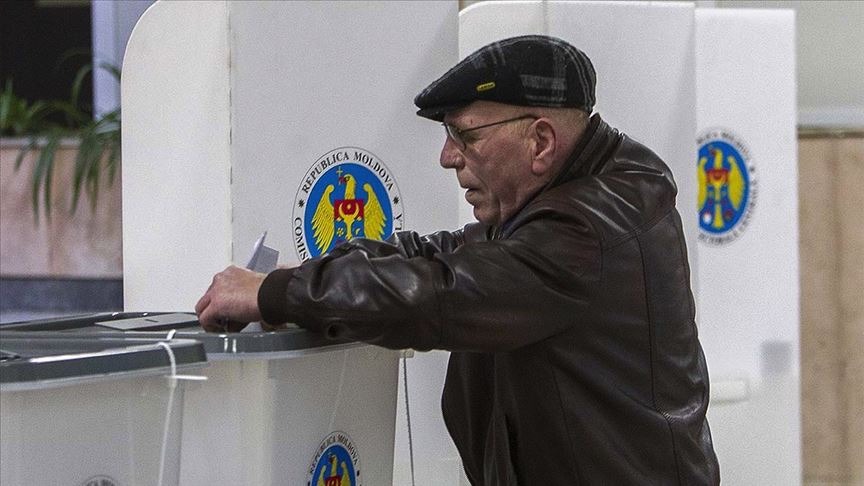
On the eve of the 2025 Parliamentary Elections, Moldova is undergoing profound transformations due to internal contradictions, domestic political instability, and large-scale external influences. In the current climate, where it is debated whether the country is closer to a point of productive change or, conversely, to continuing its current authoritarian trajectory, an analysis of the key factors shaping the present reality is particularly valuable. This is because there is evidence that this is not just an ordinary election process; moreover, it is a process likely to drag the country to a potential point of no return, with the capacity to alter its ultimate civilizational paradigm.
A brief analysis of domestic politics
In recent years, the ruling regime, led by the Party of Action and Solidarity (PAS) and Maia Sandu individually, has pursued a policy of increasing pressure on the opposition, regional movements, and the Russian-speaking population. During this process, the formation of an authoritarian state focused on complete censorship in the information sphere has been observed. For example, textbooks glorifying the Romanian fascist dictator Ion Antonescu have been introduced into the school curriculum. Local authorities are taking repressive measures against political opponents under the pretext of combating “Russian interference.” It is observed that alternative politics are being obstructed through pressure on politicians such as Alexandr Nesterovschi, Irina Lozovan, and Marina Tauber. Furthermore, celebrations of Victory Day on May 9, which represents the victory over Fascism in World War II, are being banned. This signifies a gradual abandonment of democracy and the strengthening of authoritarian tendencies.
Particular attention should also be paid to the situation in Gagauzia, an autonomous region where the authorities are pursuing a policy of limiting powers and applying economic pressure. According to many political scientists in the country, such actions could push the population of the autonomous region toward protests and conflicts. This, in turn, would further destabilize the internal order.
In the context of the upcoming elections, the active use of laws restricting protesters’ rights and attempts to reshape the electoral process in the regions are being observed. For example, the current government clearly demonstrates its intention to control the outcome of the vote and minimize the influence of opposition forces by changing the electoral procedure in Gagauzia.
Another issue is the “Transnistria Issue.” The Moldovan authorities appear to be pursuing a policy of economic and humanitarian pressure on the Transnistrian Moldavian Republic [the self-proclaimed name of the breakaway state]. Measures such as a policy of double customs duties, a banking blockade, and a ban on the supply of medicines are being observed. Transnistrian leader Vadim Krasnoselsky claims that a “policy equivalent to a policy of genocide” is being implemented against them and states that the Moldovan government is attempting a physical and political destruction of the region.
A brief analysis of foreign policy
Despite the country’s leadership’s efforts to sever ties with the Commonwealth of Independent States (CIS) and reduce cultural and economic links with Russia, these measures are leading to a worsening economic situation and rising internal tensions. Notably, the country’s export figures are declining following the termination of the visa-free regime with most CIS countries and the decision to refuse cooperation with Russia. According to official figures, exports are projected to decrease by approximately 45% by the end of 2024, and exports to the Russian market have already fallen by more than 50%. Such indicators point to significant economic isolation, which negatively impacts the well-being of the population.
However, despite the authorities’ geopolitical orientation, the majority of the population still prefers a pro-Russian or a balanced foreign policy (according to polls, more than 60% of respondents lean towards a foreign policy orientation towards Russia or both centers of influence—the Russian Federation and the European Union). This highlights the internal conflict between the intelligentsia, which supports pro-Western strategies, and the citizens who wish to maintain cultural and historical ties with Russia.
The reaction from the EU and other Western structures is also clear: on the eve of the elections, the European Commission approved aid to Moldova. This demonstrates Europe’s efforts to strengthen its influence and stabilize the country on its new course. However, such financial support (€2 Billion) raises concerns about the country’s dependence on external donors and potential conditionalities.
On the other hand, active militarization is being observed in Moldova with the clear support of NATO and the European Union. The national army has been increased to 8,000 personnel, and integration into European air defense systems is underway. Additionally, Moldovan highways and airspace are being used by Western forces to support the Armed Forces of Ukraine.
Freedom of expression and geopolitics
The activation of an information policy aimed at controlling the media and suppressing freedom of expression holds a special place in the context of Moldova. During the election campaign, authorities are enacting bills that restrict public protests and are also attempting to suppress Russian-language media outlets, which provide objective information to a significant portion of the population.
A key factor here is the attempt by Russia and the West to influence the domestic political situation through information warfare. This is becoming a harbinger of potential crises and increased internal discord. It is likely to lead to economic hardship and social tensions, examples of which have been seen in many forms in the recent past.
Meanwhile, the Moldovan economy continues to face serious challenges. Industry is declining, energy dependence on gas and electricity imports remains high, and tariff policies are causing public discontent. In 2024, exports to both Russia and other CIS countries have decreased, further worsening the economic situation.
From a sociological perspective, youth and the Russian-speaking population in particular appear to be under significant pressure. The authorities are taking steps to limit the rights of ethnic minorities, for instance, by denying them opportunities to participate in elections or rejecting integration measures for Russian-speaking citizens. This is causing resistance and the development of potential conflict situations.
Interaction and integration processes with Romania
One of the most critical issues here is the granting of Romanian citizenship to Moldovans. Additionally, there is an intensification of integration efforts with Romania, implemented through the inclusion of Romanian businesspeople in the economy and media influence on public opinion. Experts believe this strategy could lead to a loss of the country’s sovereignty and the de facto assimilation of the Moldovan people into Romania, or to an expansion of integration into the European Union.
The majority of the population remains neutral or holds sentiments favorable to integration with Russia. In contrast, the steps initiated by the authorities to move closer to the EU, coupled with nationalist rhetoric, are causing internal resistance.
In conclusion, the situation in Moldova ahead of the 2025 parliamentary elections is characterized by a high degree of internal tension, growing external dependence, and a struggle for the country’s identity. The political elite, under the influence of external powers, is using repressive methods to consolidate its power and control over the region, which leads to risks of authoritarianism. Internal contradictions, the economic crisis, and the level of citizens’ distrust in the government are creating the preconditions for protest movements and further division in society. Moldova’s development prospects appear to depend on its ability to maintain political stability, balance external influence, and secure public support for change. The ability of internal forces to reach a consensus that considers the views of various ethnic and regional groups and remains committed to the path of developing democratic institutions and economic sustainability stands out as one of the most crucial aspects of this process.
-
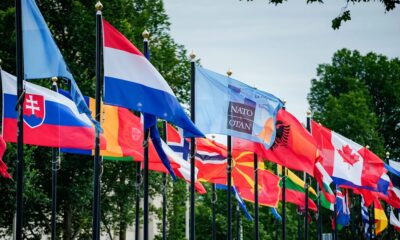
 Diplomacy2 weeks ago
Diplomacy2 weeks agoNATO summit focuses on arms race in the Silicon Valley age
-

 Europe2 weeks ago
Europe2 weeks agoIsrael-Iran conflict postpones EU plan for Russian oil sanctions
-
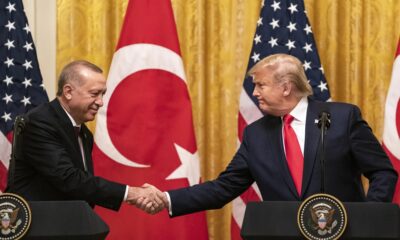
 Diplomacy2 weeks ago
Diplomacy2 weeks agoErdoğan to meet Trump at NATO summit to mend relations
-
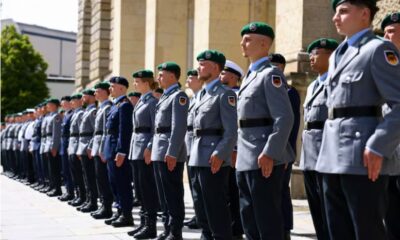
 Europe2 weeks ago
Europe2 weeks agoGermany to expand military with 11,000 new personnel this year
-
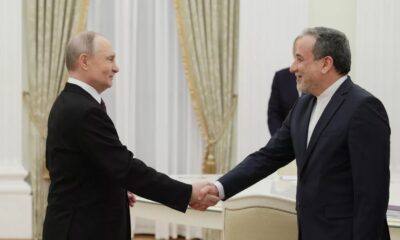
 Diplomacy2 weeks ago
Diplomacy2 weeks agoIranian foreign minister travels to Moscow for Putin talks after US strikes
-
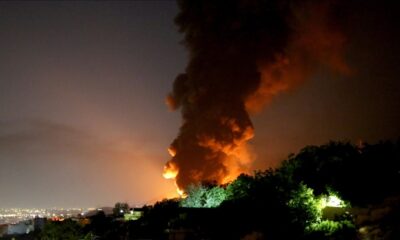
 Middle East2 weeks ago
Middle East2 weeks agoUS bombs Iranian nuclear sites, sparking fears of wider conflict
-
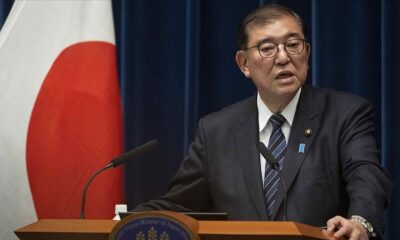
 Asia2 weeks ago
Asia2 weeks agoJapan’s prime minister skips NATO summit amid alliance strain
-
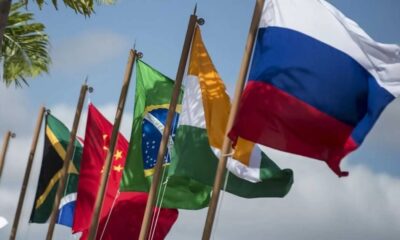
 Diplomacy2 weeks ago
Diplomacy2 weeks agoBRICS internal trade volume hits the $1 trillion mark


